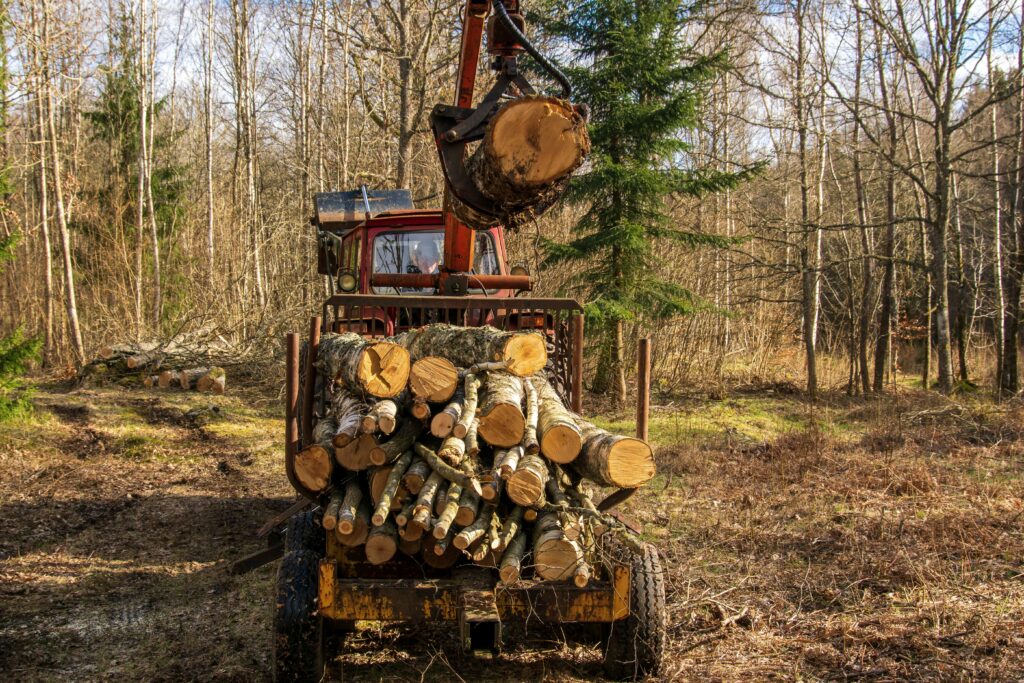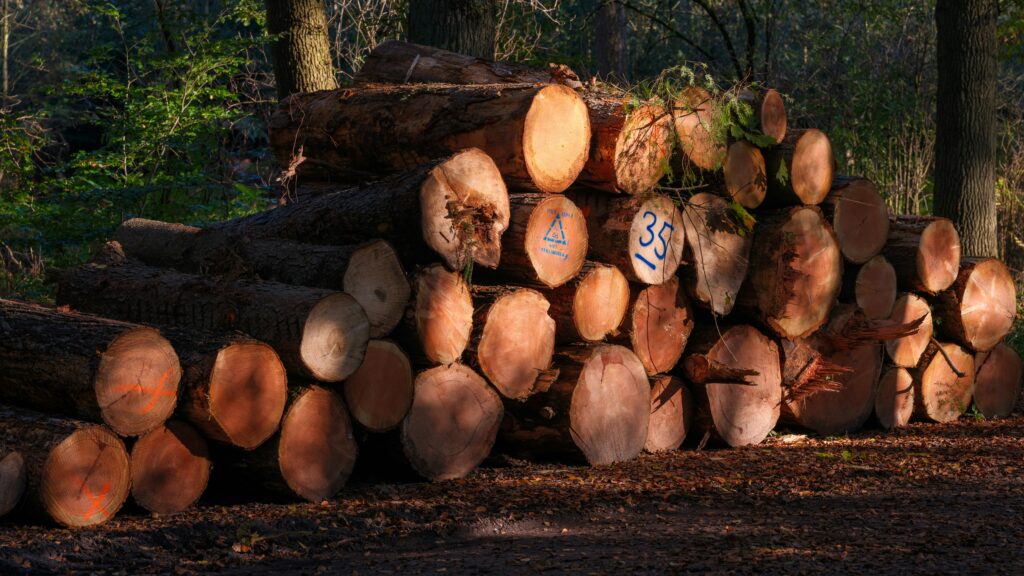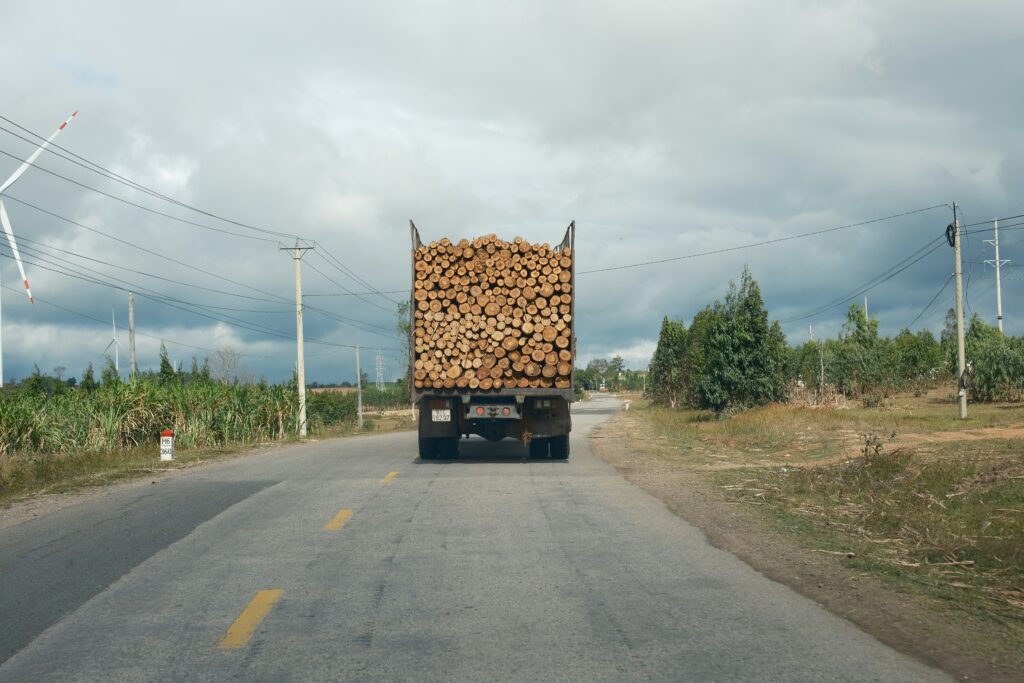EUDR certification is the new legal standard for companies operating within the EU supply chain of high-risk commodities such as coffee, cocoa, soy, palm oil, rubber, cattle, and wood. With enforcement dates set for 30.12.2025 for large enterprises and 30.06.2026 for SMEs, compliance is no longer optional.
This article explains what EUDR certification entails, why it matters, and how the eudr.co platform supports companies at every step from field-level data collection to audit-ready documentation. Whether you’re an importer, exporter, processor, or trader, understanding EUDR requirements is critical for legal operations and long-term competitiveness in the EU market.
What Is EUDR Certification?
EUDR certification is the process of proving compliance with the EU Deforestation Regulation (Regulation (EU) 2023/1115). It applies to businesses that import, export, or trade certain high-risk commodities within the EU market and requires them to meet strict environmental and legal standards.
To be certified under EUDR, companies must demonstrate that each relevant product is:
- Free from deforestation and forest degradation after 31.12.2020.
- Legally produced under the applicable laws of the country of origin.
- Fully traceable to the exact land plot where it was grown or produced.
These rules cover both raw commodities and a wide range of derived goods. For example, chocolate must be traceable to the cocoa farm, and paper products to a specific forest plot.
EUDR certification is not issued by a central authority. Instead, the company placing the product on the EU market must submit a Due Diligence Statement (DDS) through the TRACES-NT system. This statement confirms that all compliance steps have been completed, based on verifiable data and documented risk assessment.
The key purpose of EUDR certification is to shift responsibility for environmental due diligence onto the business itself. This requires companies to build reliable systems for data collection, documentation, and internal control.
In essence, EUDR certification is not a label, it is a legal confirmation that a product complies with EU rules on sustainability, legality, and transparency. It supports traceability, auditability, and accountability at every stage of the supply chain. For companies, this means integrating compliance into everyday operations, not treating it as a one-time formality.

Key Compliance Challenges under the EUDR
Achieving EUDR certification is not a matter of submitting a few documents. It requires companies to establish new systems, re-evaluate supplier relationships, and often rethink how supply chain data is collected and verified. While the regulation provides clear legal expectations, the path to full compliance is technically complex and operationally demanding.
Several challenges stand out across industries and commodity flows, especially for companies dealing with non-linear or globally distributed supply chains.
Multi-tiered Supply Chains
Modern supply chains often include a mix of smallholder producers, aggregators, processors, and traders operating across different legal jurisdictions. In this environment, tracking a single shipment back to a defined land plot presents several difficulties, including:
- Limited visibility beyond immediate suppliers.
- Inconsistent record-keeping across regions.
- Operational silos between sourcing, procurement, and compliance teams.
This complexity makes it difficult to construct the uninterrupted chain of custody required under EUDR.
Legal Documentation Gaps
To demonstrate legal production, companies must rely on land ownership records and use-rights documentation. But in many high-risk regions, the legal framework is weak or poorly enforced.
This results in common challenges such as:
- Land tenure systems are informal or contested.
- Legal documents may be missing, outdated, or non-verifiable.
- Jurisdictional overlaps create uncertainty about which laws apply.
Such gaps create legal ambiguity and raise the risk of unintentional non-compliance.
Traceability Limitations
The regulation requires traceability to the plot of origin, which demands a level of supply chain transparency many businesses have not previously achieved.
Typical barriers include:
- Blending of raw materials during aggregation, which obscures individual origin.
- Lack of digital capacity among upstream suppliers to provide standardized data.
- Disconnected systems where traceability breaks between tiers.
Without a unified method to track each batch through the supply chain, companies may be unable to prove the origin and legality of their products.
Risks of Non-Compliance
In addition to operational challenges, companies must also consider the financial and reputational consequences of failing to meet EUDR requirements.
Regulatory enforcement actions may include:
- Fines of up to 4% of the company’s annual EU turnover.
- Seizure of non-compliant goods at the border.
- Public disclosure of violations, impacting trust with clients and partners.
In some cases, non-compliance can lead to exclusion from EU markets entirely. These risks underline the importance of acting early not only to prepare documentation, but to build robust compliance infrastructure that can withstand audits and investigations.
While the EUDR sets a uniform legal requirement, the real-world ability to comply depends on a company’s operational readiness. Businesses that rely on manual data exchanges, isolated systems, or partial oversight will likely face delays, penalties, or loss of market access. Understanding the nature of these challenges is the first step toward building a reliable, scalable approach to compliance.
How eudr.co Enables EUDR Certification
At EUDR.co, we have developed a compliance platform tailored specifically to meet the legal, operational, and documentary standards of Regulation (EU) 2023/1115 the EU Deforestation Regulation. Unlike generic ESG software or improvised internal tools, our system addresses the regulation as a standalone legal obligation, not as a secondary reporting layer.
Our platform serves as a dedicated digital environment where EUDR compliance is not an afterthought, but an integrated part of business operations. This approach helps companies avoid the common pitfalls of fragmented workflows and disconnected data sources, which are often the root cause of audit failures and certification delays.
We offer an end-to-end solution that allows companies to manage every stage of their due diligence obligations with consistency and legal clarity. Specifically, our platform helps organizations:
- Digitize and automate core compliance processes that would otherwise require repetitive manual handling.
- Centralize supply chain data from various stakeholders, making it easier to verify inputs and track documentation over time.
- Create a defensible audit trail that aligns with the requirements of competent EU authorities and withstands third-party scrutiny.
By shifting from static documents and spreadsheets to structured workflows with built-in validation, companies can ensure that EUDR compliance is not only achievable, but also sustainable and scalable. This is particularly important for businesses managing complex, cross-border, or high-volume supply chains.
Our platform is designed to support compliance as a continuous function not just a reporting deadline. It helps organizations reduce legal uncertainty, respond faster to regulatory changes, and maintain alignment with EU market expectations. Ultimately, it transforms EUDR certification from a reactive obligation into a proactive, repeatable process that adds long-term value across the supply chain.

Step-by-Step Certification Support with the eudr.co Platform
Every phase of EUDR certification requires precise, well-documented actions that comply with legal standards and are verifiable under audit. At eudr.co, we structure the compliance journey into five operational modules. Together, they form a unified system that transforms EUDR compliance into a scalable, continuous process from field data collection to full audit readiness.
Geolocation Mapping and Verification
EUDR compliance begins at the land plot. The regulation requires companies to prove that every product batch originates from land that has not been deforested or degraded after 31.12.2020. This makes accurate geolocation the legal and technical foundation of certification.
Our platform enables companies to gather and verify this data through tools designed for real-world use. For example, producers and field staff can use mobile apps to record GPS coordinates even in offline environments. These coordinates are automatically validated against WGS84 standards and overlaid with historical satellite imagery to verify land conditions.
Key features include:
- Offline geolocation capture, ensuring participation from low-connectivity or remote areas.
- WGS84 compliance, required for legally accepted geospatial submissions.
- Satellite imagery overlays, enabling visual confirmation of land stability over time.
- Timestamped data with version tracking, creating a traceable, immutable record for each land plot.
This step ensures that all products have a legally defensible link to their origin, which is crucial for building a transparent and credible chain of custody.
Product Traceability Across the Supply Chain
After confirming the origin, EUDR requires that traceability be preserved through every point in the supply chain. This means companies must track product movement from field to export, including any processing, consolidation, or transformation steps.
Our platform supports detailed product tracking using unique batch IDs and GIS-based mapping. Even when shipments are combined from multiple sources or transferred through several handlers, the traceability of each input is maintained.
Key features include:
- Unique batch IDs, which link all compliance data to specific shipments.
- GIS-based supply chain visualization, showing product movement through actors and geographies.
- Digital handover documentation, capturing each transfer of custody.
- Blended batch traceability, allowing companies to maintain origin links even when goods are aggregated.
Maintaining uninterrupted traceability is essential for generating valid Due Diligence Statements and for passing regulatory audits with confidence.
Automated Due Diligence Workflows
Due diligence under EUDR is more than paperwork – it’s a structured legal process. For each shipment, companies must collect evidence, assess risk, and determine whether the product presents a non-negligible risk of illegality or deforestation.
Our platform replaces inconsistent, manual procedures with automated workflows. These workflows guide users through each required step, helping them stay compliant across different commodities, countries, and legal systems.
Capabilities include:
- Standardized collection of supplier declarations and land-use documents, reducing variation and errors.
- Integrated risk scoring tools, based on regional risk profiles and commodity-specific indicators.
- Automatic escalation to enhanced due diligence, when high-risk signals are detected.
- DDS generation, auto-formatted to meet TRACES-NT submission standards.
This module ensures consistency, speeds up preparation, and helps internal teams build repeatable compliance routines.
Real-Time Forest Monitoring
Even after DDS submission, compliance must be actively maintained. If deforestation occurs on a declared plot after certification, the shipment can be retroactively disqualified putting companies at risk of penalties and loss of market access.
To prevent this, we offer continuous satellite monitoring of registered plots. The system uses high-resolution imagery and AI-based detection to identify risks early, such as tree cover loss, fire scars, or unauthorized land clearing.
Monitoring features include:
- Ongoing observation of certified areas, with regular imagery updates.
- Real-time alerts for environmental changes, automatically sent to compliance teams.
- Action logging, documenting how alerts were reviewed and addressed.
This not only strengthens long-term compliance but also demonstrates to regulators that companies are exercising continuous due diligence, not just point-in-time assessments.
Continuous Audit Readiness
EUDR enforcement includes retrospective inspections, with record retention requirements extending to five years. Companies must be able to present comprehensive, untampered records to authorities at any moment even years after the original shipment.
Our platform is built to meet this standard by preserving all compliance-related data securely and transparently. From geolocation to risk evaluation, every step is logged and protected.
Key features include:
- Blockchain-secured document storage, preventing unauthorized edits or deletions.
- Detailed version histories and user audit trails, making it easy to trace every action.
- One-click compliance reporting, generating structured files for internal, third-party, or regulatory audits.
This final module ensures that companies are always prepared not just for submission, but for future scrutiny. It supports legal defensibility, operational confidence, and regulatory trust at every stage.

How eudr.co Supports All Supply Chain Actors in EUDR Certification
EUDR certification assigns different legal and operational responsibilities to various participants in the supply chain. Each actor from operators to traders to auditors plays a distinct role in ensuring traceability, legality, and ongoing compliance. Our platform reflects this role-based structure by offering customized access, permissions, and workflows tailored to each user category.
This alignment is critical in complex supply networks where multiple parties contribute to a single shipment. By mirroring legal responsibilities within the system, we help businesses maintain clarity, accountability, and coordination throughout the compliance process.
Operators (Importers/Exporters)
Operators are the central legal entities under the EUDR framework. They are the ones placing products on the EU market or exporting them from it, and therefore carry full responsibility for compliance. This includes collecting and validating geolocation data, evaluating risk, and formally submitting the Due Diligence Statement (DDS).
Because they oversee the full due diligence process, operators must coordinate with upstream suppliers, internal teams, and downstream stakeholders. They require comprehensive access to compliance workflows, as well as the ability to manage documentation, initiate assessments, and track submissions across all shipments.
In practice, the operator functions as the legal anchor of certification. Any failure in their due diligence process whether in data, timing, or decision-making has direct legal consequences.
Traders
Traders act as intermediaries in the value chain. While they do not submit DDS themselves, they are still required to uphold the traceability and documentation of regulated products already placed on the market. This includes maintaining access to the compliance records provided by operators and making them available to authorities upon request.
Their role is custodial rather than declarative. However, failure to preserve documentation or the inability to prove product traceability when audited may still lead to reputational risk or regulatory inquiries. For this reason, traders need systems that allow them to retrieve and manage relevant information efficiently, without altering primary compliance records.
In shared or multi-actor environments, traders are essential in ensuring that traceability is not broken after the point of market entry.
Auditors and Internal Reviewers
Auditors whether internal compliance teams or third-party reviewers require transparency across the compliance process without compromising data integrity. Their job is to verify that DDS declarations are supported by credible, complete evidence, and that all legal procedures were followed correctly.
These users are given read-only access to key compliance data: geolocation logs, DDS records, activity timelines, and risk assessments. They do not create or edit compliance data but provide independent oversight and internal accountability.
Auditors also play a critical role in preparing for formal regulatory inspections. By simulating external audits, they help companies identify weaknesses, correct gaps, and maintain confidence in their certification workflows.
Coordinated Multi-User Collaboration
In many supply chains, certification responsibilities are distributed among different teams or even different organizations. For example, a cooperative may handle field data collection, while an exporter manages document submission. Our platform enables this kind of distributed collaboration by allowing multiple users to interact with the system according to their legal and operational role without duplication or confusion.
This structure ensures that each actor contributes exactly where required, and that legal accountability is maintained from origin to market.
Integration and Scalability with the eudr.co Certification Platform
Effective EUDR compliance doesn’t exist in isolation – it must operate alongside the systems and tools that businesses already use. That’s why the eudr.co platform is designed for interoperability and scalability from day one.
Our system offers API-ready architecture that integrates seamlessly with key enterprise tools such as ERP systems, procurement workflows, and sustainability dashboards. This ensures that due diligence processes are embedded directly into existing operations without duplication or disruption.
For organizations working across borders or at scale, flexibility is essential. Our platform supports decentralized supplier networks through mobile-first tools, multilingual access, and role-based permissions enabling consistent compliance across regions, teams, and volumes.
Whether you’re managing high-throughput logistics or working with smallholder cooperatives, eudr.co provides a reliable foundation that scales with your needs and keeps your certification strategy future-ready.
Strategic Benefits of Early Certification
EUDR certification is more than a regulatory hurdle – it’s a strategic move that can create clear commercial and operational advantages. Companies that take early action position themselves as proactive leaders in a market that increasingly values verified compliance.
By certifying ahead of the deadline, businesses can secure preferred status with EU buyers, reduce the risk of customs delays or document-related rejections, and ensure that smaller or remote suppliers have enough time to meet traceability standards. This approach also allows for phased implementation, gradual data collection, and internal system validation before the regulation takes full effect (30.12.2025 for large companies, 30.06.2026 for SMEs).
Early compliance also delivers long-term benefits that extend beyond EUDR. Verified supply chain data can strengthen ESG reporting, support climate-related disclosures, and reinforce investor trust through proof of legal and sustainable sourcing. In short, early certification sends a strong signal to markets, regulators, and stakeholders: your business is prepared, transparent, and resilient in the face of change.

Why Choose eudr.co for EUDR Certification
Selecting the right compliance partner is essential for navigating the legal and operational complexity of EUDR certification. At EUDR.co, we offer a purpose-built platform developed specifically to address the requirements of Regulation (EU) 2023/1115 not a general sustainability tool repurposed for deforestation compliance.
Our technology delivers complete supply chain traceability, with geolocation verification down to the land plot and documented chain-of-custody for each batch. Risk assessments are built in and tailored to commodity and region, ensuring decisions are standardized and legally defensible. The platform also automates the generation of Due Diligence Statements (DDS) formatted for direct submission to TRACES-NT, and provides real-time deforestation monitoring via satellite analytics with secure version tracking.
But we go beyond features. We support your teams through comprehensive onboarding, in-field training, and responsive multilingual customer support ensuring that everyone, from remote producers to legal reviewers, can contribute confidently to the certification process.
Choosing eudr.co means working with a partner that understands not just the regulation, but its real-world complexity and builds tools that make compliance reliable, scalable, and sustainable.
Conclusion
EUDR certification is a complex but essential process for companies working with deforestation-risk commodities in the EU market. It is no longer enough to have ethical intentions businesses must now provide legally verifiable proof of compliance through traceability, geolocation data, and documented due diligence.
By approaching certification proactively and using the right digital tools, companies can transform regulatory pressure into operational clarity and long-term business advantage. EUDR compliance is not just about avoiding penalties, it’s about securing access to the EU market, building trust with stakeholders, and laying the foundation for future-facing supply chains.
With the right infrastructure in place, compliance becomes a competitive asset. The eudr.co platform offers a legally robust and operationally scalable path to certification, helping companies prepare today not just for tomorrow’s regulatory demands, but for the broader shift toward transparency, accountability, and sustainable growth.
FAQ
1. What is required for EUDR certification?
EUDR certification requires companies to prove that products are deforestation-free, legally produced, and fully traceable to their exact plot of origin. This involves collecting geolocation data, verifying legal compliance under local laws, and submitting a Due Diligence Statement (DDS) through the TRACES-NT system for every shipment entering or exiting the EU. The eudr.co platform supports each of these steps with built-in tools for field data capture, document management, and standardized DDS preparation.
2. Who is affected by the EUDR and when?
EUDR applies to all businesses involved in placing, importing, or exporting regulated commodities on the EU market. Large companies must comply by 30.12.2025, while small and micro-enterprises have until 30.06.2026. Regardless of size, companies must demonstrate full compliance through traceability and due diligence. The eudr.co platform helps both large operators and SMEs prepare in line with their specific legal obligations and enforcement timelines.
3. How does geolocation data help with compliance?
Geolocation data provides legal proof that a product originates from land that was not deforested or degraded after 31.12.2020, as required by the regulation. By capturing GPS coordinates and overlaying them with satellite imagery, companies can validate land status and support their DDS filings. Our platform integrates this geospatial verification into the compliance workflow, ensuring accuracy and audit-readiness from the ground up.
4. Can blended shipments still be certified?
Yes. Blended or multi-origin shipments can be certified under EUDR as long as each contributing source is individually traced, documented, and proven compliant. The eudr.co platform supports this through batch-level identifiers and multi-source mapping, maintaining links between the final product and its verified origins even in complex aggregation scenarios.
5. What are the consequences of non-compliance?
Failure to comply with EUDR can lead to serious legal and financial consequences. These include fines of up to 4% of annual EU turnover, seizure of non-compliant goods, and public disclosure of violations. In severe cases, businesses may be excluded from the EU market. The eudr.co platform helps companies minimize these risks by enabling structured, auditable, and legally defensible compliance processes.
6. Is the eudr.co platform suitable for smallholders and local cooperatives?
Yes. The eudr.co platform is designed to be inclusive and accessible. It provides mobile-first tools, multilingual interfaces, and offline functionality to support participation from smallholder farmers, local cooperatives, and remote suppliers. This ensures that all contributors regardless of technical capacity or connectivity can be part of a verified, traceable supply chain.
7. How is the eudr.co platform different from traditional ESG systems?
Most ESG platforms are designed for general sustainability reporting and lack the legal specificity required by Regulation (EU) 2023/1115. In contrast, the eudr.co platform is purpose-built for EUDR certification. It provides granular geolocation traceability, automated due diligence workflows, and audit-ready recordkeeping ensuring full alignment with EU legal standards, not just broad ESG principles.
8. How does eudr.co support companies during audits?
The eudr.co platform is designed with audit-readiness in mind. It maintains a full version history of all compliance actions, including user activity logs, document uploads, and geolocation verifications. All records are blockchain-secured to ensure integrity and traceability. When an audit is initiated, companies can generate export-ready compliance reports with a single click, ensuring fast, structured responses to regulatory authorities.
9. Can eudr.co help if the supply chain spans multiple countries?
Yes. Many EUDR-regulated supply chains involve producers, processors, and traders across multiple countries and legal jurisdictions. The eudr.co platform is designed to manage this complexity with multilingual interfaces, country-specific risk evaluation tools, and secure role-based access for distributed teams. This ensures that traceability, documentation, and legal compliance are maintained consistently across all regions involved in the product’s lifecycle.


